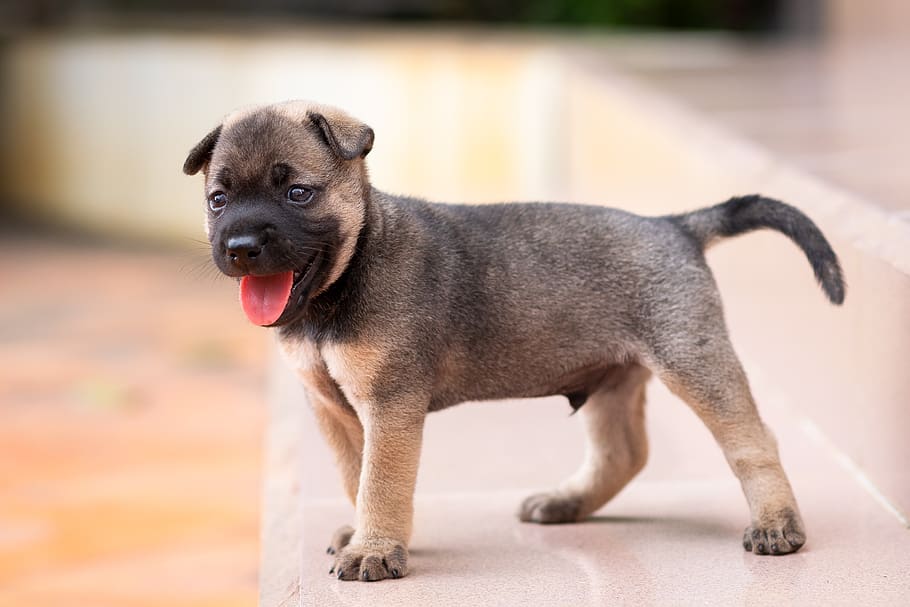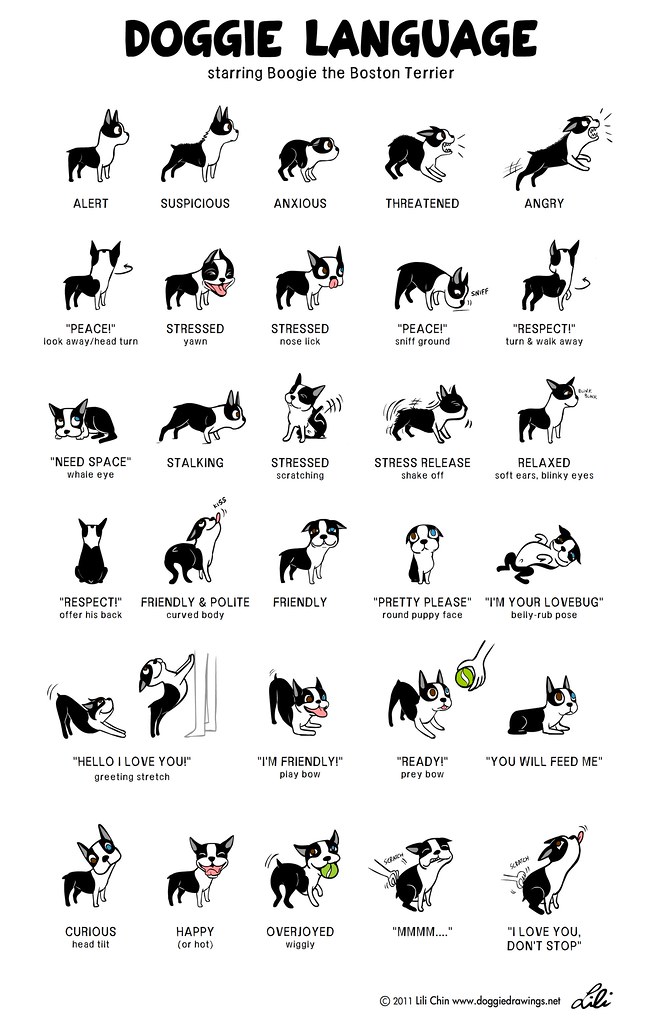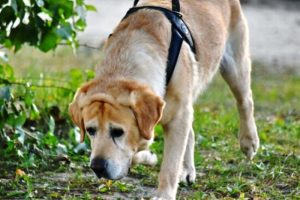
Dog body language involves a series of unique methods for communicating emotions and intentions. It can be quite different from how humans communicate.
A lot of canine communication consists of barks, whines and growls, so it is essential to know what dog sounds mean. More often, though, dogs rely on nonverbal body language. That can lead to plenty of human-dog misunderstandings. Sometimes, dog body language is simply unfamiliar. To better communicate with your canine companion, here are a few tips on reading dog body language.

Tail Wagging
Tail wagging seems like an unmistakable body language signal. If a dog’s tail is wagging, the dog is happy, right? Wrong. People misinterpret this signal all the time. All a wagging tail means is that the dog is emotionally aroused. It could be excitement but it could also be frustration or worse. To interpret the dog’s emotions and intentions, look at the speed and direction of the wag as well as the position of the tail.
Basically, the faster the wag, the more aroused the dog. Think about those long, slow, side-to-side tail sweeps your dog makes when greeting you – the type that wags the dog’s whole body. That’s a relaxed dog.
The direction of the wag may hold cues as well. A study on tail-wagging showed that dogs tend to wag more to the right when they feel positive about something. Tails wagged more to the left when dogs faced something negative. Then, there is the helicopter tail wag where the dog’s tail spins in a circle. Without question, that’s a happy wag. You will usually see it when a dog is greeting a beloved person.
Raised Hackles
When a dog’s hackles are raised, it means the hair along its back is standing up. Technically called piloerection, the fur can fluff up across the shoulders or down the back to the tail. This is a definite sign that the dog is aroused but not necessarily in a negative way. The dog might be upset or stressed but could also be excited or intensely interested in something. It is often an involuntary reaction, like goosebumps in people.
Posture
A dog’s weight distribution can tell a lot about mood and intention. Consider a cowering dog that is hunched toward the ground. That’s a sign of fear or stress. The dog may be trying to get away from something and the posture makes the dog appear smaller. In other words, it says, “I mean no harm.”
The opposite posture is a dog with its weight shifted forward. This dog is trying to get closer to something. This might indicate a dog’s interest but it could also reveal offensive intentions, particularly paired with other aggressive body language cues like a twitching tail held high. In this case, the dog is trying to appear larger.
An easy-to-read aspect of dog body language is the play bow. This is when dogs place their chest on the ground with their rump in the air. As the name implies, it is used to initiate play with other dogs and even with people.
A less easily understood signal is the paw raise. In the pointing breeds like the English Setter, the paw raise is part of pointing behavior where the dog indicates nearby prey. However, outside of this context, a raised paw often shows a dog is uncertain about a situation or feel a bit insecure.
Facial Expressions
Dogs have similar facial features as people but they don’t use them in the same way. Consider yawning. People yawn when they are tired or bored but dogs yawn when they are stressed. According to Turid Rugaas, author of On Talking Terms With Dogs: Calming Signals, dogs use yawning to calm themselves in tense situations and to calm others, including their owners.
Lip-licking is another bit of dog body language that people often misinterpret. Like people, dogs will lick their lips after a delicious meal but they will also do it when they feel anxious. Sometimes the tongue flick is so quick it is tricky to notice.
The most confusing facial expression is smiling. Yes, some dogs smile and if you are not familiar with the expression, it can look terrifying. Usually, when dogs bare their teeth, it serves as a warning. It is hard to mistake a snarl’s aggressive intention, especially when paired with a menacing growl. The corners of the dog’s lips form the shape of a C and the front teeth are fully displayed.
None of these body language signals acts alone. They are all part of a package. So, when you read a dog’s communication, look at every signal the dog is using, from the tail height to the eye shape. Your dog is “talking” to you all the time. If you learn what your dog is saying, you will develop a deeper bond of trust and respect.
In the comment section below, let us know what helps you understand when your dog is trying to communicate with you.






